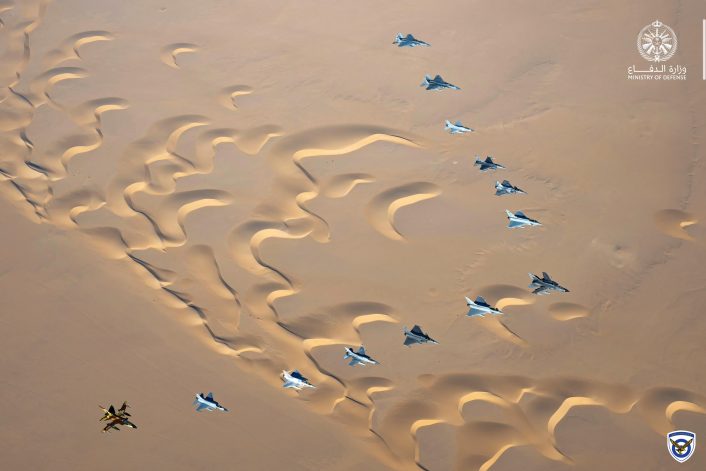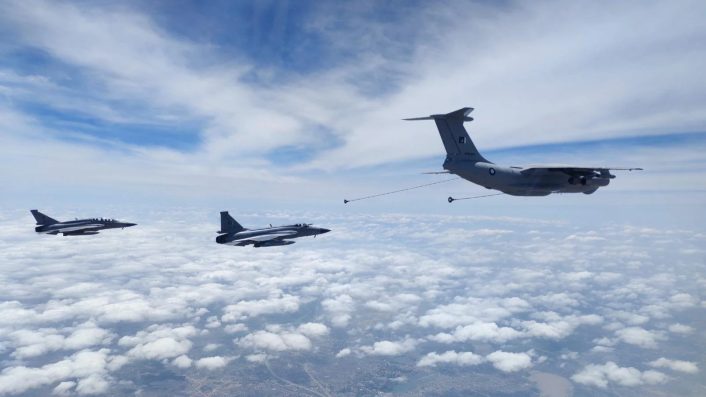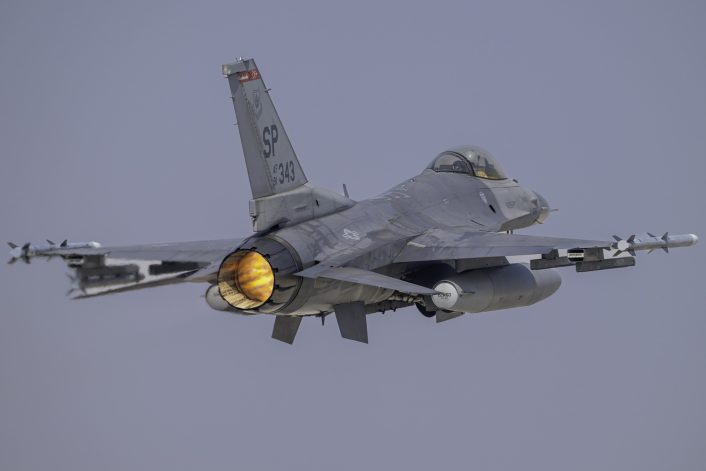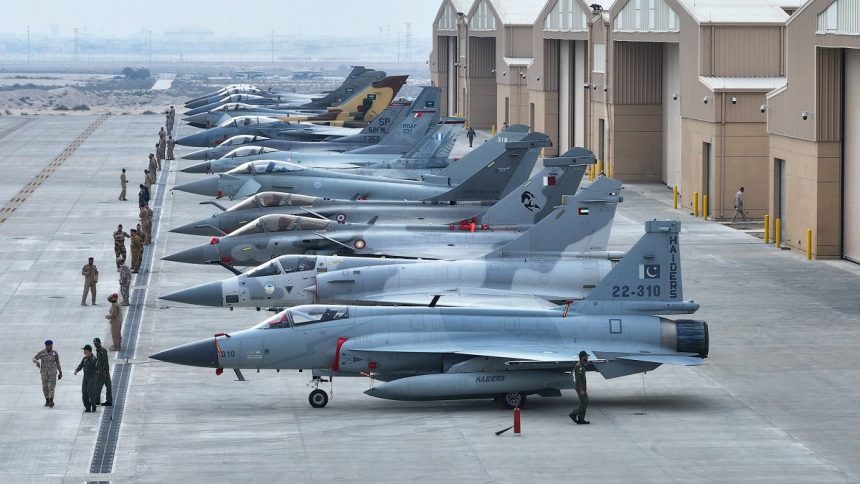One of the largest multinational exercises in the Middle East, Spears of Victory 2025 saw the involvement of 15 nations aiming to strengthen military partnerships, facilitate the exchange of expertise and enhance combat readiness.
The Saudi Arabian annual multinational exercise, Spears of Victory, was held this year from Jan. 26 to Feb. 6 by the Royal Saudi Air Force’s (RSAF) Air Warfare Center, located at King Abdulaziz air base near Dhahran. The exercise is considered one of the largest multinational exercises in the Middle East and aims to strengthen military partnerships, with 15 nations involved.
RSAF Maj. Gen. Mohammed bin Ali Al-Omari, the commander of the exercise, said that the aim was to enhance allied combat readiness (especially in the electronic warfare field), provide a ground for the exchange of expertise in planning and implementation, and to promote joint operational strategies.
U.S. Air Force F-16 Fighting Falcons participate in Spears of Victory, an annual Saudi-led, multinational large force exercise that included 70 aircraft from 15 countries, such as Qatar, Bahrain, UAE, UK, Greece, France, and Pakistan. The exercise provides an opportunity to share… pic.twitter.com/tVemH0zB8y
— U.S. Central Command (@CENTCOM) February 10, 2025
Participating Aircraft
This year, more than 70 air assets from nine countries took part in the large-scale exercise: Saudi Arabia, Bahrain, Greece, France, Qatar, the UK, the US, the UAE, and Pakistan. Furthermore, seven additional countries participated as observers: Australia, Egypt, Italy, Jordan, Morocco, South Korea, and Spain.
As the exercise features a large number of air forces, a large variety of air assets were also seen. As the host, the RSAF participated with its fleet of F-15s in the C/D/S/SA variants, Eurofighter Typhoons, and Panavia Tornados. A unique visitor was the Pakistani Air Force’s (PAF) JF-17 Block III, which executed a non-stop deployment flight from Pakistan and Saudi Arabia and back, utilizing air-to-air refueling.

F-16s were perhaps the most abundant aircraft, with three nations bringing their Vipers (as the F-16 is affectionately known by crews) to the exercise. The U.S. Air Force (USAF) participated with Spangdahlem-based F-16C/Ds Block 50, the Royal Bahraini Air Force (RBAF) with their F-16C/Ds Block 40, and finally the Hellenic Air Force (HAF) with their F-16C/Ds Block 50.
From January 26 to February 6, 🇬🇷 F-16s, took part in the ‘Spears of Victory 2025’ exercise in Saudi Arabia, alongside forces from 🇸🇦🇫🇷🇦🇪🇬🇧🇺🇸🇧🇭🇶🇦🇵🇰.
A showcase of strength, precision, and international cooperation! ✈️🔥#SpearsOfVictory25 #HAF #F16 #341SQ pic.twitter.com/iBfs6THzOz
— Hellenic Air Force (@HAFspokesperson) February 12, 2025
The Rafale was also present, as the Armée de l’Air et de l’Espace (French Air and Space Force) brought the Rafales based in the UAE, where they have a number of aircraft permanently deployed, while the Qatar Emiri Air Force brought its own. Finally, the RAF and the United Arab Emirates Air Force brought their Eurofighter Typhoon FGR.4s and Mirage 2000-5s, respectively.
[#JeudiPhoto 📸] Un salut de l’exercice multinational Spears of Victory en Arabie saoudite !🫡 pic.twitter.com/FZb1mP91hh
— Armée française – Opérations militaires (@EtatMajorFR) February 6, 2025
Of course, the large-scale exercise also featured support aircraft, such as tankers like the USAF’s KC-135s and Saudi Arabian A330 MRTTs, and transport aircraft, such as the French A400M, a Greek C-130H and C-27J, and the UAE’s C-17.
Spears of Victory 2025
Spears of Victory 2025 marks the fifth edition of the exercise, which focused on addressing current and emerging threats and advancing tactical capabilities. Statements before the start of the exercise mentioned that participants would engage in complex tactical operations that have been designed to accurately simulate threats in an advanced electronic warfare environment.
A more detailed description of the aforementioned current and emerging threats included in the exercise was not disclosed. However, last year the Royal Air Force mentioned that the exercise simulated operations against a peer adversary, including defensive and offensive counter-air operations, as well as air interdiction training against live and simulated threats.

The HAF mentioned in a statement about this year’s edition that “missions covering the full spectrum of air operations were conducted, both day and night, in an environment simulating modern threat scenarios.” The objective was to enhance the level of cooperation and interoperability among the participating forces.
After the previous edition, the USAF said the multilateral exercise built “confidence by familiarizing operators with a wide array of aircraft in various contingency scenarios,” and was an occasion to “improve interoperability, strengthen military relationships and increase flexibility to address existing and emerging threats.” Similarly, this year the French Ministry of Defense said the exercise “allowed the participating nations to strengthen their interoperability, by harmonizing their procedures and rules of engagement, while developing common know-how.”
France also mentioned the crews were able to “implement and improve their skills in situations as close to reality as possible, in an inter-allied environment.” To do this, not only fighters were involved in the exercise, but also tanker, control, transport and jamming aircraft as well as drones and helicopters.

As already mentioned, the exercise is one of the largest multinational exercises hosted in the Middle East region. The exercise, which included both academics and air operations, featured experts across various fields to further increase the training opportunities.
In the end, Spears of Victory 2025, which was a significant platform for fostering collaboration and sharing expertise in modern aerial combat strategies between allied nations, allowed the participating air forces to strengthen their interoperability, share their procedures, tactics and rules of engagement, and develop their combat ability. This is especially important in a tense area like the Middle East.









